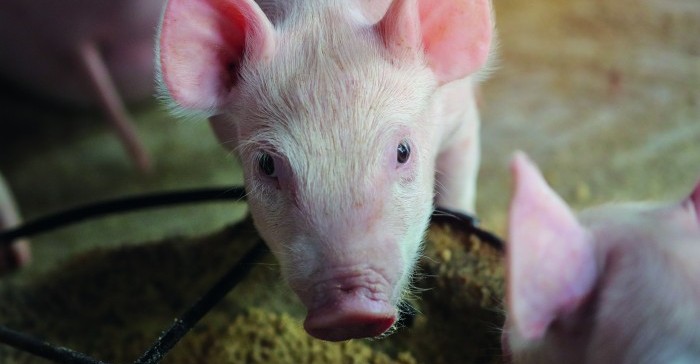GB pig feed production was 9% down on 2021 levels during the five-month period from July to November.
The decline to 814,000 tonnes of pig feed produced over the period was driven by big drops in both finisher (-33,000t) and breeder feed (-22,000t) production.
AHDB trainee analyst Tom Price said the decline reflects the difference between the 2021 period as pigs were heavily backlogged on farm due to problems in abattoirs and the equivalent 2022 period when the backlog was ‘relatively cleared’. It also follows a reduction in the sow herd as many producers have either left the industry or cut back on numbers, partly on the back of record feed costs.
Total GB animal feed production, including integrated poultry units (IPU), from July to November 2022 was down 5% on year earlier levels, at 5.41Mt. This is the lowest level of feed production for the first five months of the season since 2016/17, Mr Price added.
While all major animal feed categories are lower on the year so far (except sheep feed), the main driver of the decline, unsurprisingly is the monogastric sector, with poultry volumes also well down.
Compared to July to November 2021, total poultry feed production (including IPUs) was down 184,000t (-7%) at 2.48Mt, with both layer and broiler feed production has reduced by around 50,000t over the period. Both layer and broiler producers have been under pressure from squeezed margins, the avian flu outbreak and the cost of living crisis impacting consumer buying habits.
For ruminants, total cattle and calf feed production is down 2% over the five-month period, with a rise in dairy feed production, being outweighed by a drop in all other cattle feed. Sheep feed is the only sector which has increased on year earlier levels, with total production 10,000t higher year on year from July to November.
Further decline
Mr Price said it was expected that animal feed production will continue to decline this season, largely driven by reductions in poultry and pig feed production.
“With high input costs expected to remain this season, producer margins are going to continue to be squeezed. On top of that, a shift in consumer buying habits is expected to continue, due to the cost of living crisis,” he said.
The good news for livestock producers is that wheat prices continue to fall – feed wheat was quoted by AHDB at £220/tonne on January, compared with a high of £350/t in May 2022. But soya prices remain high.




